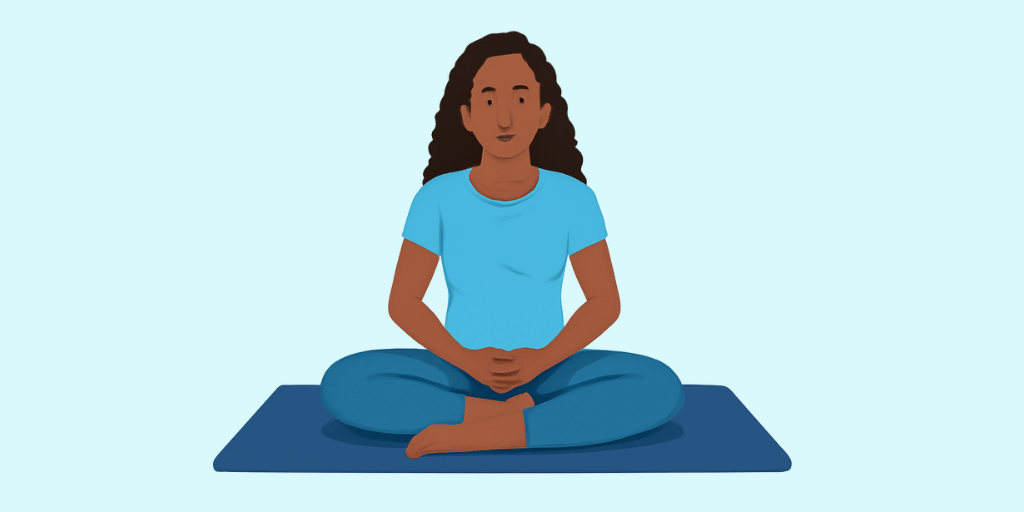Sanskrit Name: अन्तर कुम्भक
English Name: Internal Breath Retention
Description:
The Sanskrit term Antar Kumbhak (अन्तर कुम्भक) is derived from “Antar” (internal) and “Kumbhak” (breath retention), meaning the holding of breath after inhalation in Pranayama (yogic breath control). This technique is a key element in breath mastery, helping regulate prana (life force) and deepen mental focus. By holding the breath inside, Antar Kumbhak allows oxygen to be efficiently absorbed while calming the nervous system and enhancing lung capacity.
This practice is integral to advanced yogic disciplines, as it strengthens respiratory function, improves concentration, and prepares the mind for meditation and higher states of awareness. Antar Kumbhak also stimulates the parasympathetic nervous system, reducing stress, stabilizing emotions, and promoting inner stillness. It is often practiced in techniques like Nadi Shodhana (alternate nostril breathing), Ujjayi (ocean breath), and Anulom Vilom, amplifying energy flow and mental clarity.
Benefits:
In modern wellness, Antar Kumbhak supports better focus, endurance, and mindfulness. Regular practice improves lung efficiency, enhances vitality, and fosters emotional resilience. By incorporating it into daily life, practitioners experience greater self-control, tranquility, and inner balance, unlocking a deeper connection between breath, body, and consciousness for overall well-being and spiritual growth.
Medical Conditions(Avoid):
Antar Kumbhaka, or internal breath retention, should be avoided in the following medical conditions:
- Cardiovascular Issues: Individuals with heart conditions, such as hypertension or heart disease, may experience increased strain during breath retention.
- Respiratory Disorders: Conditions like asthma or chronic obstructive pulmonary disease (COPD) can be exacerbated by breath-holding techniques.
- Anxiety Disorders: Those with anxiety or panic disorders might find breath retention triggers discomfort or panic attacks.
- Pregnancy: Pregnant individuals should avoid practices that may restrict breathing or cause undue stress.
- Epilepsy: Breath retention may provoke seizures in susceptible individuals.
- Recent Surgery: Recovery from surgical procedures, especially those involving the chest or abdomen, may require avoiding breath retention to prevent complications.
Note: Always consult with a healthcare professional before practicing breath retention techniques.

